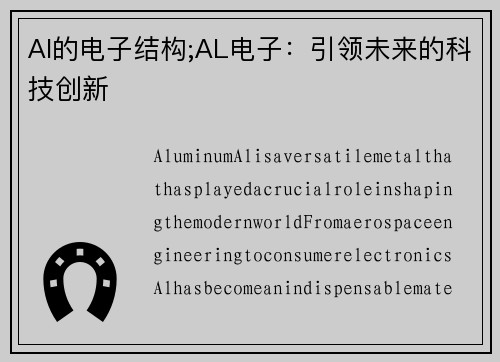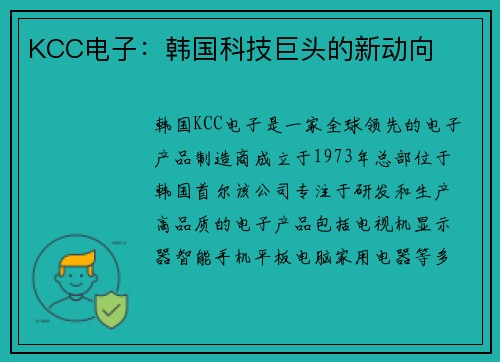Aluminum (Al) is a versatile metal that has played a crucial role in shaping the modern world. From aerospace engineering to consumer electronics, Al has become an indispensable material in various industries. In this article, we will explore the electronic structure of Al and how it has contributed to technological innovations.
Al的电子结构
Aluminum is a chemical element with the symbol Al and atomic number 13. It is a silvery-white, soft, nonmagnetic, ductile metal in the boron group. Its electronic configuration is [Ne] 3s2 3p1, indicating that it has three valence electrons in its outer shell. This unique electronic structure gives Al its characteristic properties, making it an excellent conductor of electricity and heat.
j9九游会官方网站入口在航空航天领域的应用
The lightweight and strong nature of Al makes it an ideal material for aerospace applications. Its low density and high strength-to-weight ratio have made it a popular choice for aircraft construction. The electronic structure of Al allows it to form strong metallic bonds, giving it the necessary mechanical properties to withstand the rigors of flight. From aircraft frames to rocket components, Al has revolutionized the aerospace industry.
In addition to its mechanical properties, the excellent thermal conductivity of Al, stemming from its electronic structure, has also made it a preferred material for heat exchangers and thermal management systems in aircraft and spacecraft.

在电子产品中的应用
The electronic structure of Al also plays a crucial role in its widespread use in electronic products. Its excellent conductivity and corrosion resistance make it an ideal material for electrical wiring and components. The thin oxide layer that forms on the surface of Al protects it from further oxidation, ensuring its longevity in electronic devices.
Furthermore, the reflective nature of Al, a result of its electronic structure, has made it a popular choice for reflective coatings in LCD displays, solar panels, and other electronic devices. Its ability to efficiently reflect light and heat makes it an essential component in modern technology.
在汽车制造中的应用
Aluminum's electronic structure has also revolutionized the automotive industry. Its lightweight nature, combined with its strength and durability, has led to its widespread use in car bodies, engine components, and wheels. The electronic structure of Al allows for efficient energy transfer and dissipation, making it an ideal material for improving fuel efficiency and overall performance in vehicles.
Furthermore, the recyclability of Al, a result of its electronic structure, has made it an environmentally friendly choice for car manufacturers. Its ability to be recycled repeatedly without losing its properties makes it a sustainable material for the automotive industry.
在建筑工程中的应用
The electronic structure of Al has also made it a popular choice in the construction industry. Its corrosion resistance and ability to withstand harsh environmental conditions make it an ideal material for architectural elements, such as windows, doors, and cladding. The malleability of Al, stemming from its electronic structure, allows for intricate designs and shapes, making it a versatile material for architectural applications.
Furthermore, the lightweight nature of Al, a result of its electronic structure, reduces the overall weight of structures, leading to cost savings and improved energy efficiency. Its ability to be easily formed and fabricated makes it a preferred material for modern architectural designs.
In conclusion, the electronic structure of Al has played a pivotal role in its widespread applications across various industries. From aerospace engineering to consumer electronics, Al has become an essential material for driving technological innovations. Its unique properties, stemming from its electronic configuration, have made it a versatile and indispensable metal in the modern world. As we continue to push the boundaries of technology, Al will undoubtedly remain at the forefront of scientific and technological advancements.


